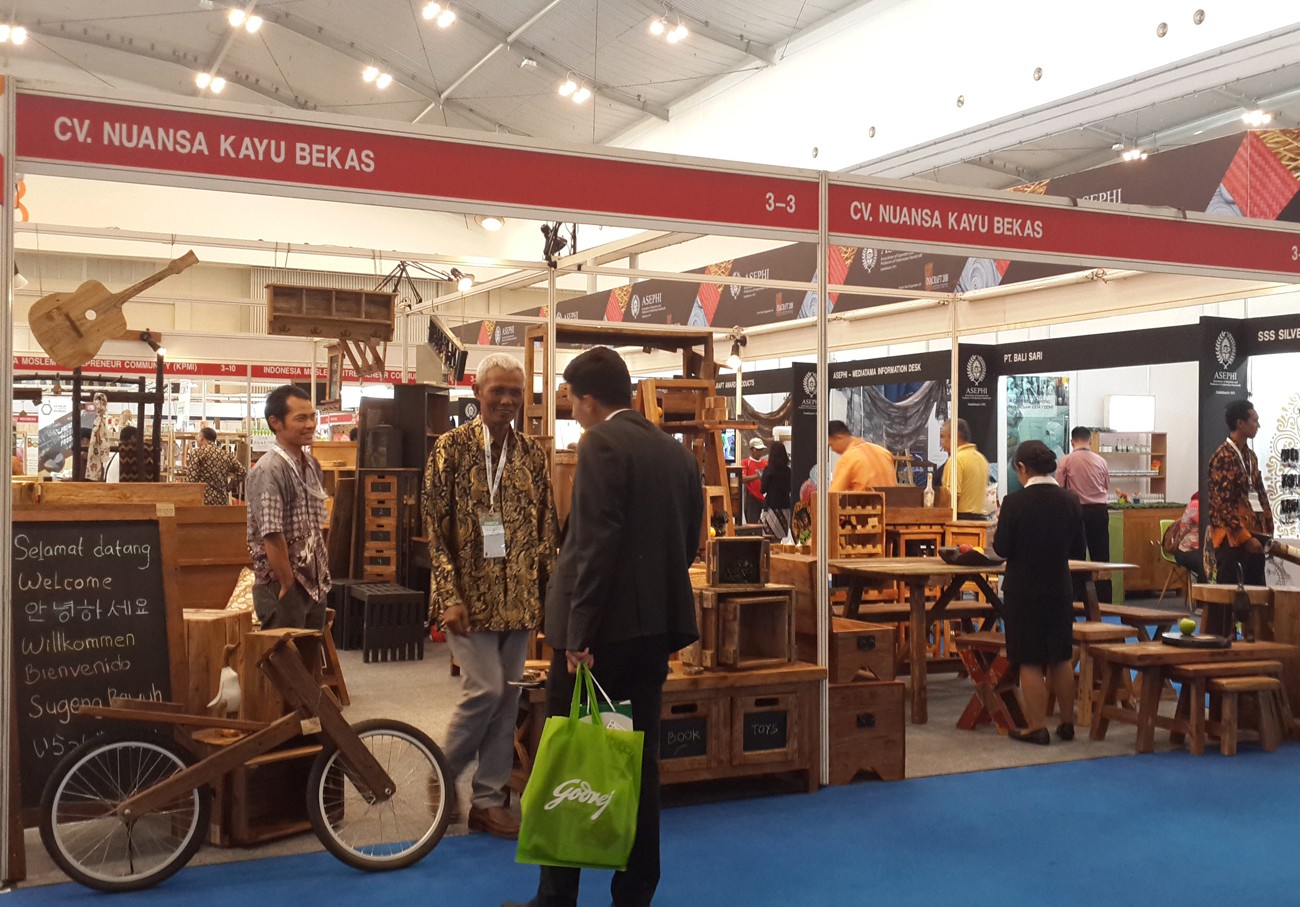Popular Reads
Top Results
Can't find what you're looking for?
View all search resultsPopular Reads
Top Results
Can't find what you're looking for?
View all search resultsHIMKI seeks to boost furniture exports
Change text size
Gift Premium Articles
to Anyone
T
he Indonesian Furniture and Craft Association (HIMKI) expects to boost furniture and wooden craft exports from US$2.5 billion in 2018 to $2.9 billion this year through its annual four-day International Furniture Expo.
In his speech at the opening of the expo on Monday, HIMKI chairman Soenoto said the expos’ sales target was $1.1 billion, comprised of on-the-spot sales ($300 million) and follow-up sales ($800 million).
But Soenoto actually opened his keynote by stressing the need to drive forward Indonesia’s entire manufacturing sector to boost nationwide exports by selling value-added products.
“Indonesia is rich in natural resources,” he said, “But if you have kale, don’t just sell kale, sell salad. That’s the added value.”
His words resonated with those of economists Faisal Basri and Gatot Arya Putra, who wrote in a 2016 report titled Escaping the middle income trap in Indonesia that Indonesia’s poor manufacturing sector would block it from becoming a high-income country.
In fact, according to the report, Indonesia’s chance of attaining high-income status is only 3 percent at current growth rates.
“The only way to escape the low and middle income trap is by strengthening the industrial sector. Thus the role of the national leadership, in this case the President, is vital,” the report said.
Responding to the pressing need for manufacturing growth, President Joko “Jokowi” Widodo and the Industry Ministry launched last year the Making Indonesia 4.0 roadmap that emphasizes growth in five select industries: automotive, chemicals, electronics, textiles and food and beverage.
The five industries, which exclude furniture, contributed at least 60 percent to national exports, employment and the manufacturing sector’s contribution to gross domestic product.
“We will continue to focus on these five sectors this year,” Industry Minister Airlangga Hartarto told the Jakarta Post on Monday.
However, HIMKI secretary general Abdul Sobur criticized the minister for not focusing enough on the furniture and crafts industry despite its strong competitive edge with rattan furniture, the base material of which is almost exclusively produced in Indonesia.
He urged the government to, for example, provide the industry with subsidies for technology and market guarantees instead of direct financing.
He also claimed the government-mandated timber legality assurance system (SVLK) was hurting downstream competitiveness even though the SVLK was necessary for exports to the European Union and United Kingdom.
Meanwhile, Adhi Lukman, chairman of the Indonesian Food & Beverage Association (GAPMMI), expressed disappointment with his industry’s performance.
Food and beverage exports, which make up almost a quarter of annual exports, decreased 6.3 percent from $31.8 billion in 2017 to $29.9 billion in 2018, according to Industry Ministry data.
“There are actually a lot of smaller countries out there that could become our new export destinations, but we’re hampered by their high tariffs,” he said during an event last month.
A case in point, he said were certain African countries that charged tariffs of up to 30 percent on Indonesian products and thus, the government should escalate efforts to reduce such barriers through trade agreements.
In this vein, Indonesia signed a trade deal with Australia last week and plans to conclude eleven more agreements this year including with the EU and South Korea.
Ade Sudrajat, chairman of the Indonesian Textiles Association (API), said he looked forward to the ratification of the recently signed Indonesia-Australia trade deal, and expected it to increase textile exports to Australia.
“The deal will improve our competitiveness. In the future, Indonesia [instead of China] will dominate the Australian textile market,” he said as recently reported by media outlets.
Indonesia's worldwide textile imports increased from $12.54 billion in 2017 to $13.5 billion last year with the association optimistic that it can achieve higher growth this year.
Minister Airlangga noted on Monday that the deal with Australia would also benefit HIMKI because furniture was already Indonesia’s second-most profitable export to Australia with $214.9 million in sales last year.










